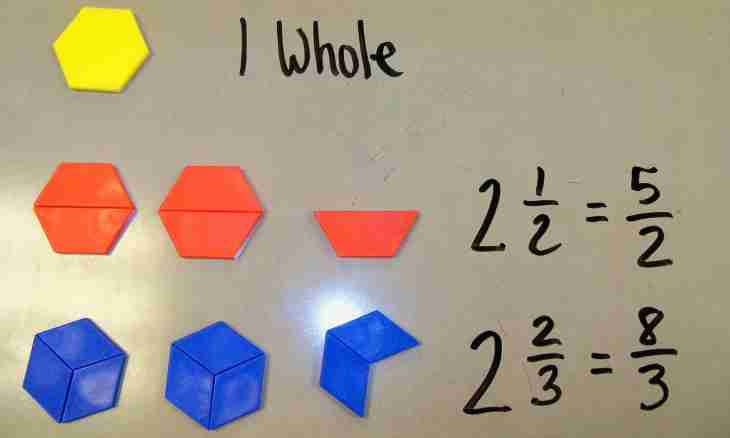Division operation - one of the main arithmetic actions studied in initial classes. However to that algorithm which is taught at elementary school, additional nuances are gradually added. They need to be considered including at division of smaller number into bigger.
Instruction
1. If a large number are zero, then division into it of any smaller (that is negative) values it is impossible by definition.
2. If it is required to divide any positive size into the value surpassing it, then result the fractional number will be obligatory. As there are several options of record of fractions, it is necessary to begin with definition of a format in which it is required to receive result of operation - the algorithm of your subsequent actions depends on it. Possible options two: fraction ordinary or decimal. Consider at first, for example, obtaining result in a format of a common fraction.
3. Make a common fraction of reference values - put bigger number in a denominator, and smaller - in numerator.
4. Try to simplify fraction, that is to pick up the general for a dividend and a divider an integer into which they can be divided without the rest. If such number cannot be found, then the fraction received on the previous step and will be result of division. If the common divisor exists, then divide into it both components. For example, if initial numbers were 42 and 49, then the seven will be a common divisor: 42/49 = (42/7) / (49/7) = 6/7.
5. If the result of division of bigger number on smaller under the terms of a task can be presented in a format of decimal fraction, then just divide a dividend into a divider in any convenient way - in mind, in a column or by means of the calculator. Often as a result of this action irrational numbers turn out, that is the number of signs after a comma will be infinite. Certainly, in this case you need to determine the accuracy of result, necessary under the terms of a task, and to round the received value.
6. If smaller and bigger numbers have different signs, that is the dividend is a negative number, then act by the rules described above, having rejected for a while the sign of smaller size. The value of number without the sign is called its "module" or "absolute value". After the end of operation add the negative sign to the received result of division on the module.
7. If both sizes participating in operation are negative, then result it will be obligatory positive number. Therefore signs can be rejected at once and more in general not to remember them.
